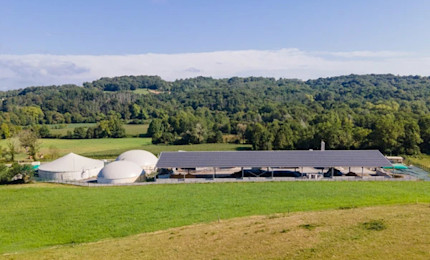Urgence gaz 0 800 028 800

Local authorities: discover the key points of Teréga’s action on atmospheric emissions
Our commitment to reducing atmospheric emissions is evidenced by the continuous reduction of our greenhouse gas emissions over a number of years. Encouraged by these effective and regular results, we have now concentrated our action around three main objectives: the reduction of gas emissions during maintenance work, the detection and reduction of diffuse losses, and the optimisation of processes contributing to a drop in GHG discharges.
Responsibility and transparency: our standards of conduct on emissions
For Teréga, reducing greenhouse gas emissions is more than a mere response to legal obligations. By positioning ourselves as a responsible business, we have written limiting the impacts associated with our activities into our very DNA. Thus, ten years on, we are involved in practical actions in that respect. In 2017, we launched our BE POSITIF corporate programme which sets out clear and ambitious standards of conduct on how we manage all our activities: to contribute to carbon neutrality of France. Our approach considers the different types of impact that gas transport and storage can have: energy management, reduction of emissions and the preservation of biodiversity.
When it comes to greenhouse gas emissions, we feel you need to “meter well” to act better, so that specific quantified targets can be set. As a result, we meter all our GHG emissions and make our findings and action plans available to our stakeholders, of which you are one, on the official website managed by the ADEME.
Teréga: specific fields of action for better performance
When it comes to atmospheric emissions, we concentrate our actions on a number of areas to increase the reach of what we do, particularly:
the CO2 arising from the combustion of gas is used as an energy source (turbo-compressors, reboilers etc.). We are switching our compression resources over to electric compressors;
methane emissions during “venting” (shutdown of compressors or engineering work). We are testing a number of solutions, including auxiliary compressors to recover the gas emitted so that it can be injected back into the grid. Since 2020 we have also been using our own mobile recompression truck: a specific solution for work on the transport grid;
flaring of excess gas (dehydration process at the Lussagnet storage facility). We have introduced the principle of using a flare to burn off the methane and reduce its overall global warming potential;
the switchover of our vehicle fleet to NGV etc.








